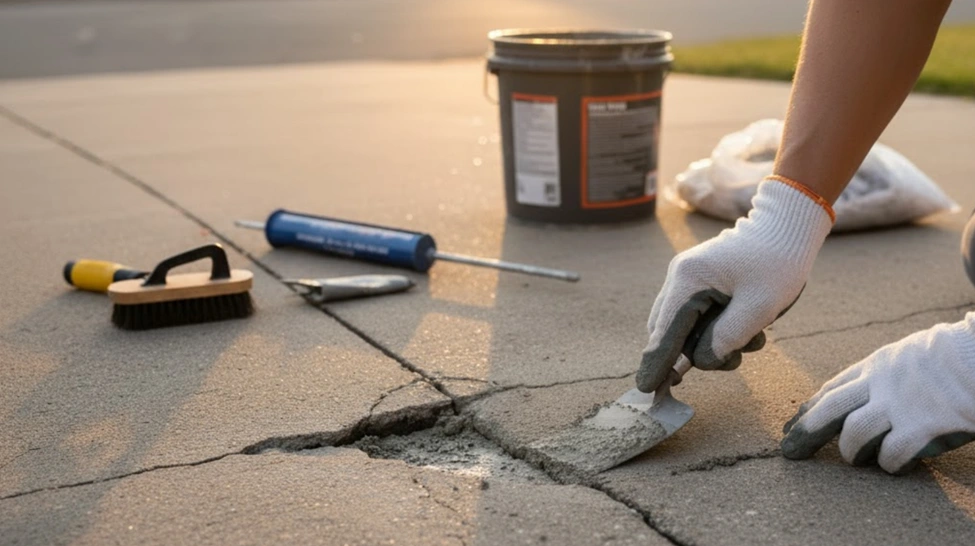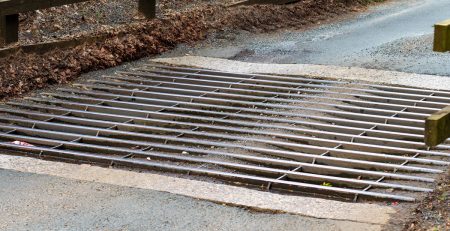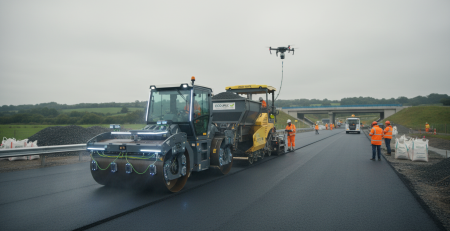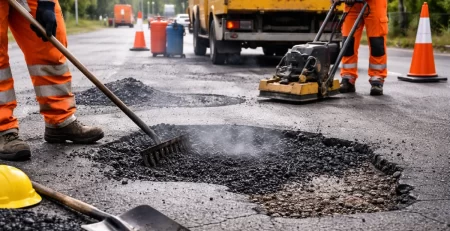Concrete Driveway Repair Tips for Long Lasting Results: Guide for UK Homeowners
Your concrete driveway endures constant pressure from weather extremes, vehicle weight, and daily wear. Understanding proper repair techniques can extend its lifespan by decades and save thousands in replacement costs.
This comprehensive guide reveals professional strategies for identifying damage early, selecting the right repair methods, and implementing preventive maintenance that keeps your driveway pristine.
You’ll discover how to tackle everything from hairline cracks to major structural issues, plus learn when professional intervention delivers the best value for UK homeowners.
Understanding Common Concrete Driveway Problems
Recognising the different types of damage affecting your concrete driveway helps you respond with the appropriate repair method before minor issues escalate into expensive replacements.
Hairline and Shrinkage Cracks
Hairline cracks appear naturally during the curing process as concrete shrinks and adjusts to temperature changes. These thin, superficial breaks typically measure less than 3mm wide and pose minimal structural threat.
Shrinkage cracks develop vertically within the first few months after installation and can be sealed with flexible polymer-based fillers available at most UK DIY stores.
Early intervention prevents water infiltration that leads to deeper damage during freeze-thaw cycles common in British winters.
Settlement and Structural Cracks
Settlement cracks indicate more serious underlying problems with soil stability or inadequate sub-base preparation. These wider, deeper fractures occur when the ground beneath shifts or compacts unevenly. Structural cracks often exceed 6mm in width and may cause sections of your driveway to sink or heave noticeably.
Properties considering upgrades might explore options like the cost of a concrete driveway replacement or alternative solutions, such as resin driveways in Essex that offer superior flexibility and drainage capabilities.
Spalling and Surface Deterioration
Spalling manifests as flaking, chipping, or pitting across the concrete surface, exposing the aggregate underneath. This deterioration typically results from moisture penetration, use of de-icing salts, or poor-quality concrete mixes. The damaged surface loses structural integrity and becomes increasingly vulnerable to further breakdown.
Professional assessment becomes crucial when spalling affects large areas, as custom resin finishes in the UK may provide more durable long-term solutions than traditional concrete repairs.
Essential Tools and Materials for Concrete Driveway Repair
While basic DIY repairs suit minor cosmetic issues, substantial concrete damage requires professional expertise and specialised equipment to ensure lasting results.
Professional-Grade Repair Materials
Polymer-modified cement overlays offer superior adhesion and water resistance compared to standard concrete mixes for resurfacing damaged areas. These advanced compounds bond effectively to existing concrete while providing enhanced durability against moisture and temperature fluctuations.
High-quality patching materials contain additives that improve flexibility and reduce the likelihood of future cracking. Professionals can recommend appropriate products based on your specific damage type and local climate conditions throughout the UK.
Specialised Equipment Requirements
Commercial-grade pressure washers operating at 2,500 psi remove embedded dirt, algae, and loose material before repairs begin. Epoxy injection systems fill deep structural cracks with moisture-resistant bonding agents that restore concrete strength.
Grinding and polishing equipment removes surface imperfections uniformly without damaging the underlying concrete. Partnering with providers offering the best road surfacing services in the UK ensures access to industrial equipment that achieves professional-quality results impossible with DIY approaches.
Why Professional Installation Matters?
Experienced contractors understand the critical relationship between proper sub-base preparation, correct concrete mixing ratios, and appropriate curing conditions. They prevent common mistakes like inadequate compaction, poor drainage planning, and incorrect water-to-cement ratios that lead to premature failure.
Professional teams complete large-scale repairs efficiently while maintaining consistent quality across the entire surface. For homeowners in specific regions, working with specialists in resin driveways in Hertfordshire or similar localised services provides expertise matched to regional soil types and weather patterns.
Step-by-Step Concrete Driveway Repair Process
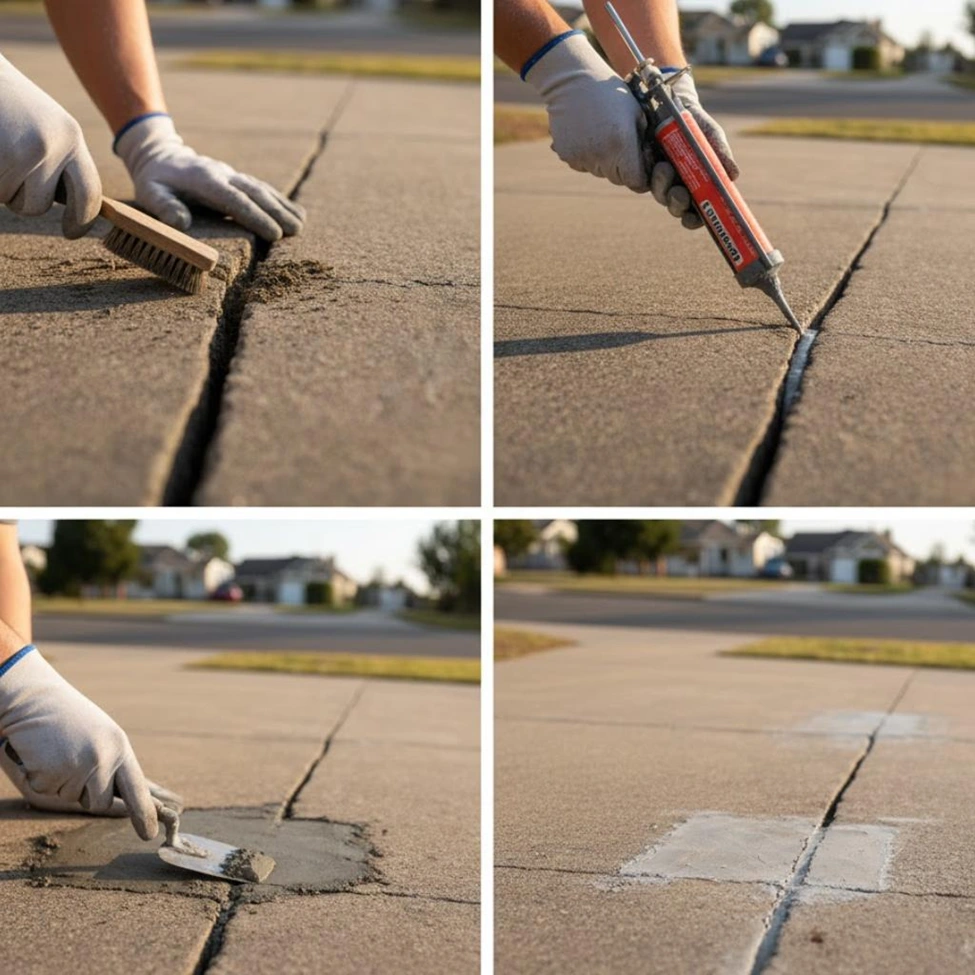
A systematic approach to concrete restoration ensures thorough preparation, proper material application, and adequate curing time for maximum longevity.
Surface Preparation and Cleaning
Begin with comprehensive cleaning to remove all loose material, dirt, oil stains, and vegetation from damaged areas. Power washing at appropriate pressure levels strips away surface contaminants without causing additional damage. Roughening the concrete surface with grinding tools improves adhesion between old concrete and new repair materials.
Check moisture levels before applying repair compounds, as excessive dampness prevents proper bonding and compromises repair integrity.
Crack Filling and Patching
Apply flexible crack fillers into clean, dry cracks using proper techniques that ensure complete penetration without air pockets. For minor hairline cracks, polymer-based sealants flex with temperature changes and prevent water intrusion. Deeper structural cracks require epoxy injection methods that restore bonding between separated concrete sections.
Patch larger damaged areas with compatible repair compounds, feathering edges smoothly to blend with surrounding surfaces.
Resurfacing and Finishing
Concrete resurfacing applies thin overlays of new material across the entire driveway surface in Hertfordshire, covering minor damage while refreshing the appearance. Spread resurfacing compounds evenly at the recommended thickness, working in manageable sections for uniform coverage. Proper finishing techniques create a consistent texture and appearance that matches existing undamaged areas.
Modern alternatives include selecting specialists in commercial road surfacing in the UK who offer advanced materials and application methods for superior durability.
Curing and Protection
Maintain proper moisture levels during the critical curing period by keeping repaired areas damp for at least seven days. Protect fresh repairs from extreme weather, heavy traffic, and temperature fluctuations during this vulnerable stage. Premature use of repaired sections leads to surface damage and compromises the repair’s structural integrity.
Allow minimum 24-hour curing before light foot traffic and 48-72 hours before vehicle access, depending on repair type and weather conditions.
Preventive Maintenance Tips for Longevity
Implementing consistent maintenance practices dramatically extends your concrete driveway’s functional lifespan while preserving its aesthetic appeal and structural soundness.
Regular Sealing and Protection
Apply high-quality concrete sealers every 2-3 years to create waterproof barriers that prevent moisture penetration and chemical damage. Sealing products protect against oil stains, de-icing salt corrosion, and UV deterioration that cause surface breakdown. Two-coat application systems provide maximum protection, with each layer requiring proper drying time before the next application.
Choose sealers appropriate for UK climate conditions that withstand frequent rain and temperature variations throughout the year.
Drainage Management
Proper drainage prevents water pooling that leads to freeze-thaw damage during the winter months. Ensure adequate slope directs water away from concrete surfaces toward designated drainage areas. Poor drainage contributes significantly to premature cracking, spalling, and structural deterioration.
Consider permeable resin driveway cost options when planning major renovations, as these surfaces naturally manage water runoff while meeting UK Sustainable Urban Drainage Systems regulations.
Seasonal Inspection and Cleaning
Conduct thorough inspections each spring and autumn to identify emerging cracks, surface deterioration, or drainage problems requiring attention. Remove debris, organic growth, and standing water promptly to prevent long-term damage. Routine cleaning maintains appearance while allowing early detection of issues before they require extensive repairs.
Use appropriate cleaning methods with non-abrasive tools and avoid harsh chemicals that degrade concrete or damage surrounding landscaping.
Immediate Crack Repair
Address new cracks immediately using appropriate fillers to prevent water infiltration and progressive widening through freeze-thaw cycles. Small repairs completed promptly cost substantially less than extensive restoration work required after neglect. Prompt intervention stops minor cosmetic issues from developing into structural problems that compromise your driveway’s load-bearing capacity.
Monitor repaired areas during subsequent inspections to ensure repairs remain effective and identify patterns suggesting underlying issues.
Areas We Serve: Hertfordshire & Essex in UK
Total Surfacing Solutions delivers trusted driveway installations and surface upgrades across the UK. Our main service zones include Hertfordshire and Essex, where we provide durable and visually appealing solutions for private and commercial clients.
Hertfordshire:
Across Hertfordshire, we install strong tarmac driveways, attractive resin bound surfaces, and high-quality playground and car park surfacing. We also handle resin road resurfacing in Hertfordshire and accurate line marking, ensuring safe, clearly defined areas for schools, businesses, and local authorities.
Essex:
In Essex, our team provides a wide selection of surfacing services, such as resin driveway construction in Essex, tarmacadam surfacing, driveway restoration, and commercial resurfacing. We also specialise in playground and sports surface installations that offer durability and safety for community use.
Wherever you’re located within Hertfordshire or Essex, Total Surfacing Solutions is committed to providing reliable, long-lasting surfacing built to enhance your property.
Frequently Asked Questions
How much does professional concrete driveway repair cost in the UK?
Professional repair costs vary significantly based on damage severity, driveway size, and required materials. Minor crack filling typically ranges from £200-£500, while extensive resurfacing projects cost £2,000-£5,000 for average-sized driveways.
Complex structural repairs requiring sub-base work or drainage improvements may exceed these estimates considerably.
Can I repair concrete driveway cracks myself?
Homeowners can successfully repair minor hairline cracks using flexible sealants available at DIY stores, following manufacturer instructions carefully.
However, structural cracks wider than 6mm, extensive spalling, or settlement issues require professional assessment and repair to ensure lasting results. Improper DIY repairs often fail prematurely and may worsen underlying problems.
How long does a properly repaired concrete driveway last?
Professional repairs using high-quality materials and proper techniques can extend concrete driveway lifespan by 10-15 years when combined with regular maintenance.
Original installation quality, local climate conditions, usage patterns, and maintenance consistency all significantly impact longevity. Preventive sealing every 2-3 years maximises repair durability and protects against premature deterioration.
Are resin driveways better than repaired concrete?
Resin-bound alternatives offer advantages including superior permeability, reduced cracking risk, and lower maintenance requirements compared to traditional concrete.
Natural stone resin driveways provide aesthetic flexibility and comply with modern drainage regulations while delivering 20+ year lifespans. However, resin driveway cost typically exceeds concrete repair expenses, making them more suitable for complete replacements than minor repairs.
Protect Your Investment with Proper Care
Strategic maintenance and timely professional intervention preserve your concrete driveway’s functionality and appearance for decades. Regular inspections catch developing problems early, while quality sealing products shield surfaces from moisture damage and chemical exposure that cause premature failure.
Investing in expert repairs from established contractors ensures work quality that withstands the demanding British climate and heavy daily use.
Balance DIY maintenance tasks with professional services for comprehensive care that maximises your driveway’s lifespan and minimises long-term costs.

